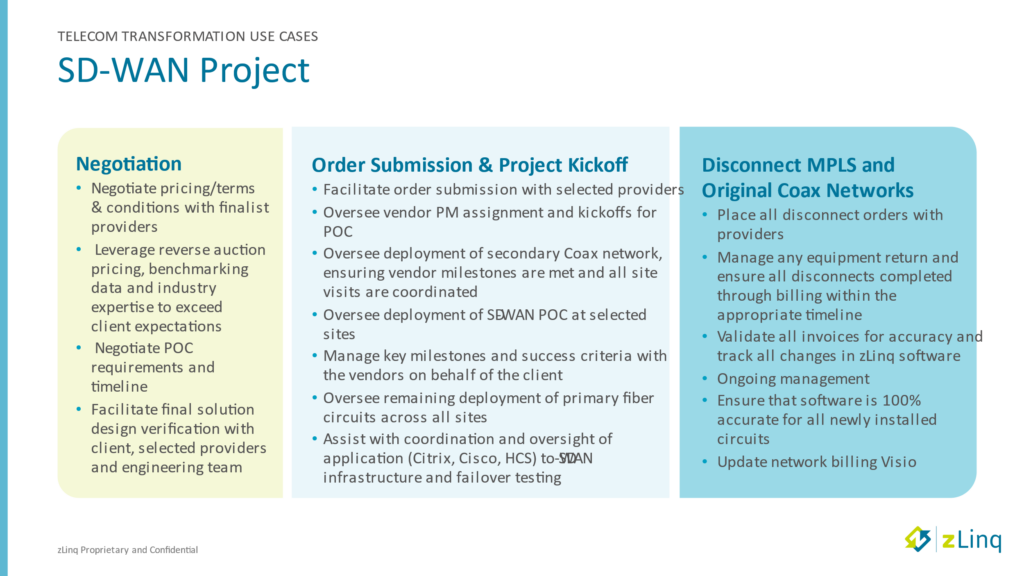With more remote workers and an ever-changing digital domain, many companies are making the switch from MPLS to SD-WAN, and for good reason. In 2019, the market for SD-WAN stood at $1.4 billion. By 2030 it is forecasted to reach $42 billion with vendors experiencing an average of 59% annual growth. However, when transferring from MPLS to SD-WAN many things can go awry. Here are some common pitfalls mid-market companies encounter when making the switch:
1. Inadequate Security Considerations: Security is a critical aspect of any network migration. As of 2018, 87% of web traffic was encrypted. While encryption is a major part of preventing cyber-attacks, failing to adequately address all security requirements during the migration can leave your network vulnerable to cyber threats. Companies should assess their security needs, including encryption, authentication, and firewall policies, and ensure that the SD-WAN solution provides the necessary security features. Proper integration of security measures and adherence to industry best practices is essential to protect the network and data during and after the migration.
2. Insufficient Monitoring and Validation: Companies must establish proper monitoring and validation mechanisms throughout the migration process. Inadequate monitoring can lead to undetected performance issues or misconfigurations. Regular validation and testing of the SD-WAN environment are essential to ensure that applications are performing as expected and that network policies are properly enforced.
3. Application and Traffic Prioritization: One of the strengths of SD-WAN is its ability to prioritize different types of network traffic based on application requirements. However, accurately identifying and classifying applications, and setting up appropriate policies for traffic prioritization can be challenging. It requires a deep understanding of the network’s application landscape and user requirements. Fine-tuning traffic policies during and after the migration is essential to achieve the desired performance and user experience.
4. Integration with Existing Systems: Mid-market enterprises may have a variety of existing systems and applications that need to seamlessly integrate with the new SD-WAN environment. 93% of organizations currently use multiple cloud platforms, so ensuring compatibility and proper integration with business-critical applications, cloud platforms, VPNs, and other network components is crucial. While a complete transfer from old applications to SD-Wan can cut costs up to 84%, a hybrid model boasts easier migration with 52% cost savings. Organizations may need to work closely with their vendors and IT teams to address any integration challenges and ensure a smooth transition.
5. Staff Training and Knowledge Transfer: SD-WAN introduces new technologies and management paradigms compared to traditional MPLS networks. IT staff and network administrators may require training and upskilling to understand the intricacies of SD-WAN, its management tools, and troubleshooting techniques. Adequate training and knowledge transfer are essential to ensure the effective management and operation of the new SD-WAN environment.
While migrating from MPLS to SD-WAN offers substantial benefits, it’s important to be aware of the challenges that may arise during the process. One way to mitigate these challenges is to hire a CLM. CLMs help by managing your telecom lifecycle from procurement, implementation, and beyond.
Pictured below is a case study of a zLinq client who came to us when making the switch from MPLS to SD-WAN.

There are many routes you can take when switching from MPLS to SD-WAN, but hiring a CLM liek zLinq is one of the easiest. By proactively addressing network complexity, connectivity limitations, traffic prioritization, security, integration, staff training, and change management, mid-market enterprises can overcome these challenges and ensure a successful migration to SD-WAN.
Interested in learning more? Fill out our interest form and start streamlining your telecom today.